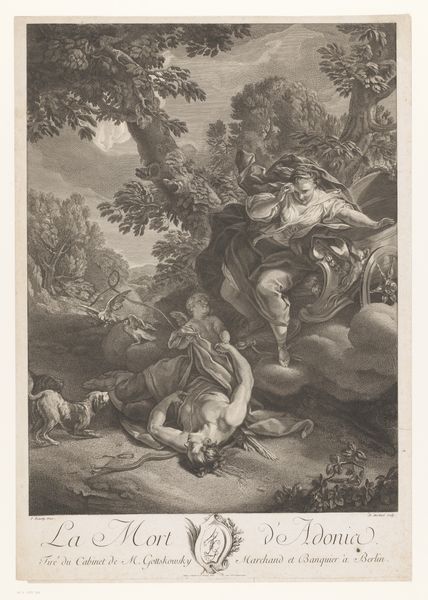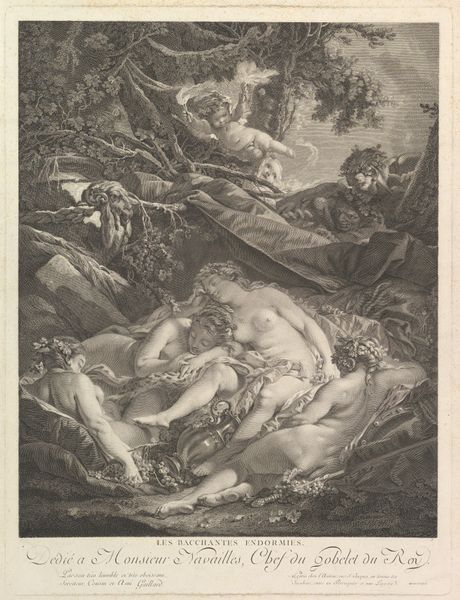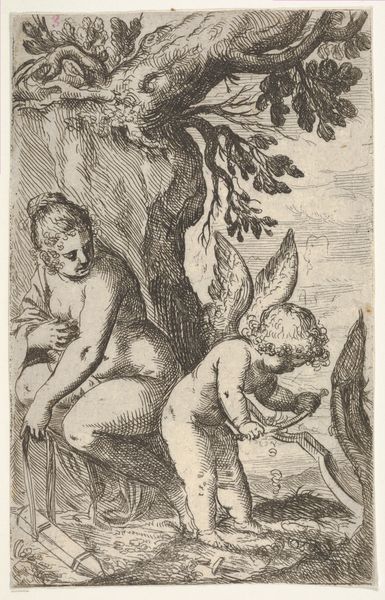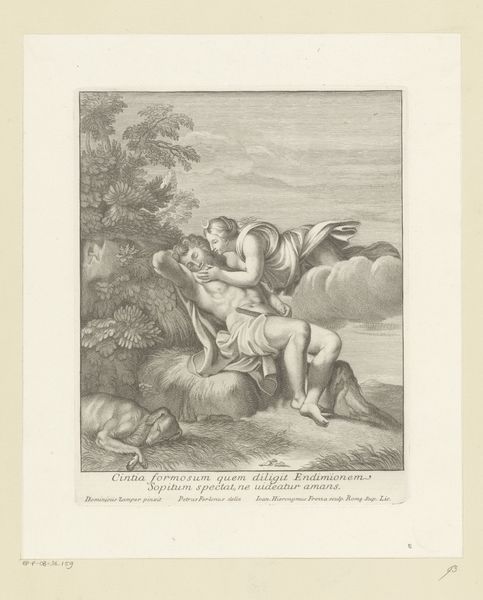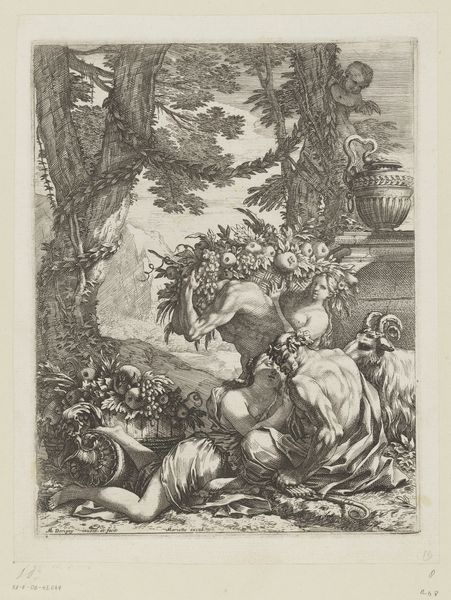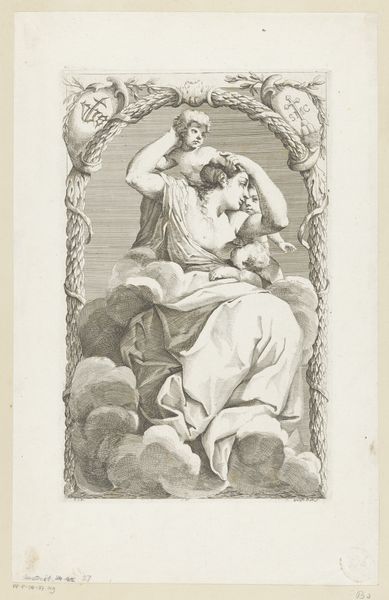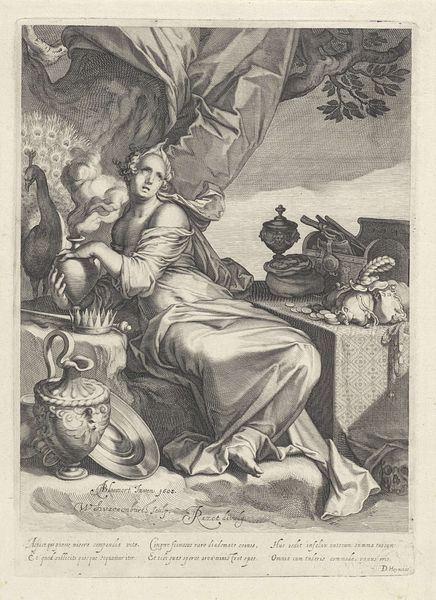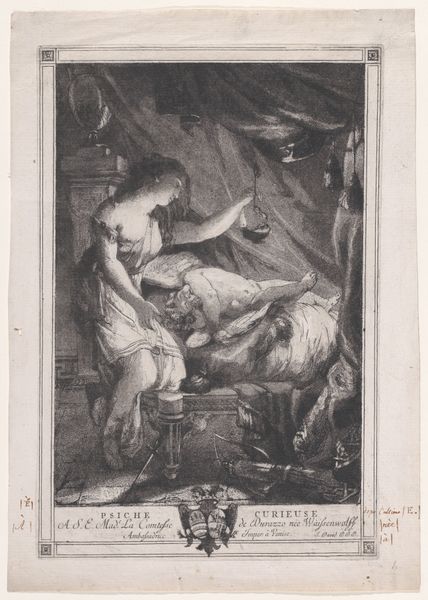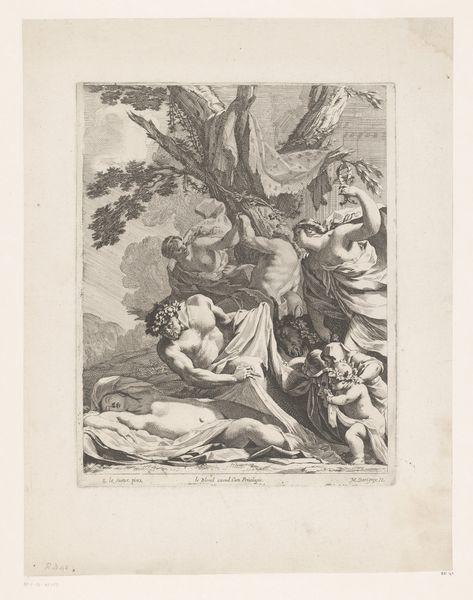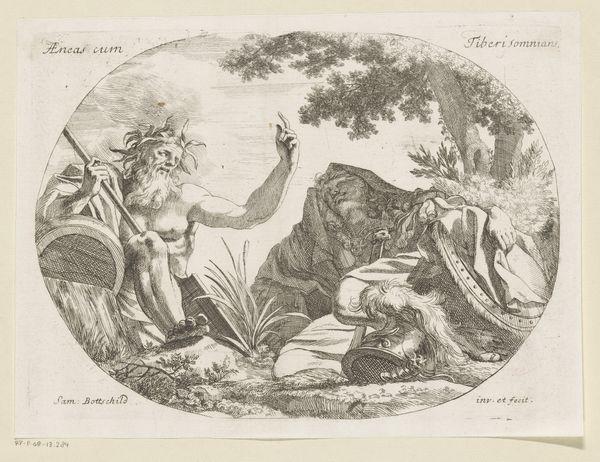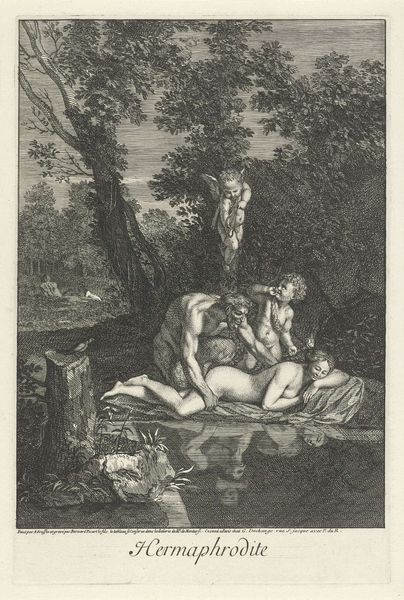
print, etching
#
allegory
# print
#
etching
#
figuration
#
romanticism
#
history-painting
#
grotesque
Dimensions: 295 mm (height) x 195 mm (width) (bladmaal)
Editor: Here we have Francisco Goya’s etching, "The Sleep of Reason Produces Monsters," created between 1797 and 1798. The shadowy atmosphere and grotesque figures definitely give it a disturbing quality. What visual elements stand out to you, and how might they contribute to the work's overall meaning? Curator: The artist meticulously employs stark contrasts of light and shadow, achieved through etching, which lends itself to rendering minute detail. This contrast emphasizes the formal division between the figure of the sleeping man and the swarm of creatures engulfing the composition. The grotesque visages of the owls and bats exhibit an aggressive materiality. They encroach upon the sleeping figure, a visual representation of reason succumbing to the nightmarish projections of the subconscious. Do you perceive the directionality of lines and how it influences our interpretation? Editor: Yes, the diagonal lines of the creatures diving downwards do create a sense of impending doom. So, you see this work primarily through its composition and material presence, as a depiction of inner turmoil made visually manifest? Curator: Precisely. Consider how Goya utilizes line weight to define form. The fineness of the etching in the man’s clothing contrasts sharply with the crude hatching used to depict the creatures. It’s a dialectic between control and chaos. The contrast inherent in the materials is pivotal to understanding the represented tension between reason and imagination. Editor: It's fascinating how the formal elements create that dialogue so vividly! I didn't consider how much the technique itself conveys meaning. Curator: Reflect on the interplay of intention and accident in printmaking, and you begin to appreciate how materiality is critical for interpreting content. Editor: Thank you; I'll definitely pay closer attention to technique from now on.
Comments
No comments
Be the first to comment and join the conversation on the ultimate creative platform.

